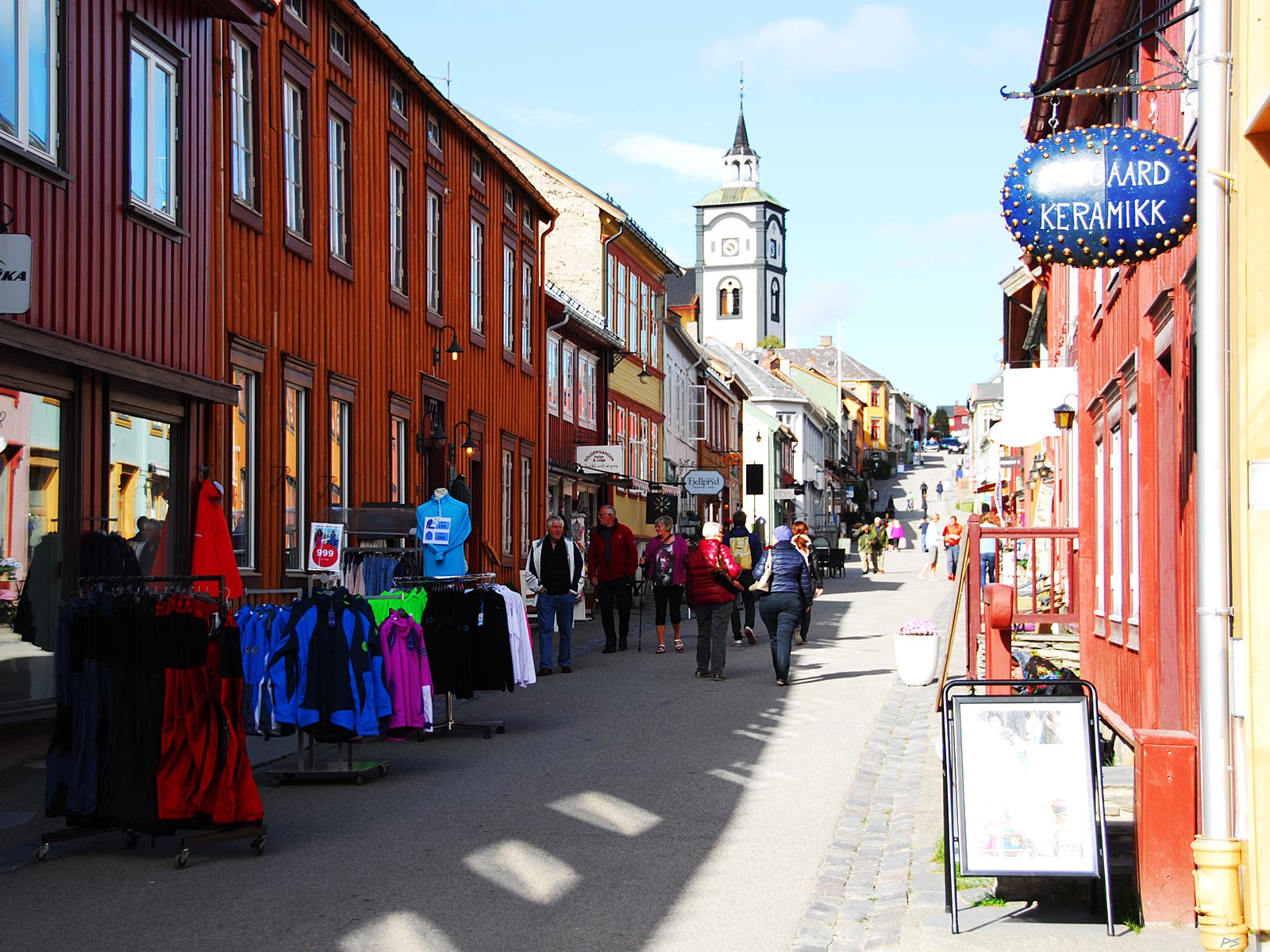
The highland town of Røros evolved from the mining of copper ore from 1644 on; the mining ending in 1977. Røros is now on the UNESCO world heritage list. This is Kjerkgata – the Church Street. On its top (altitude roughly 650 m) stands the church, consecrated in 1784. It was financed by the rich mining company, but the ownership was transferred to the parish in 1865.
(2014-08-15)
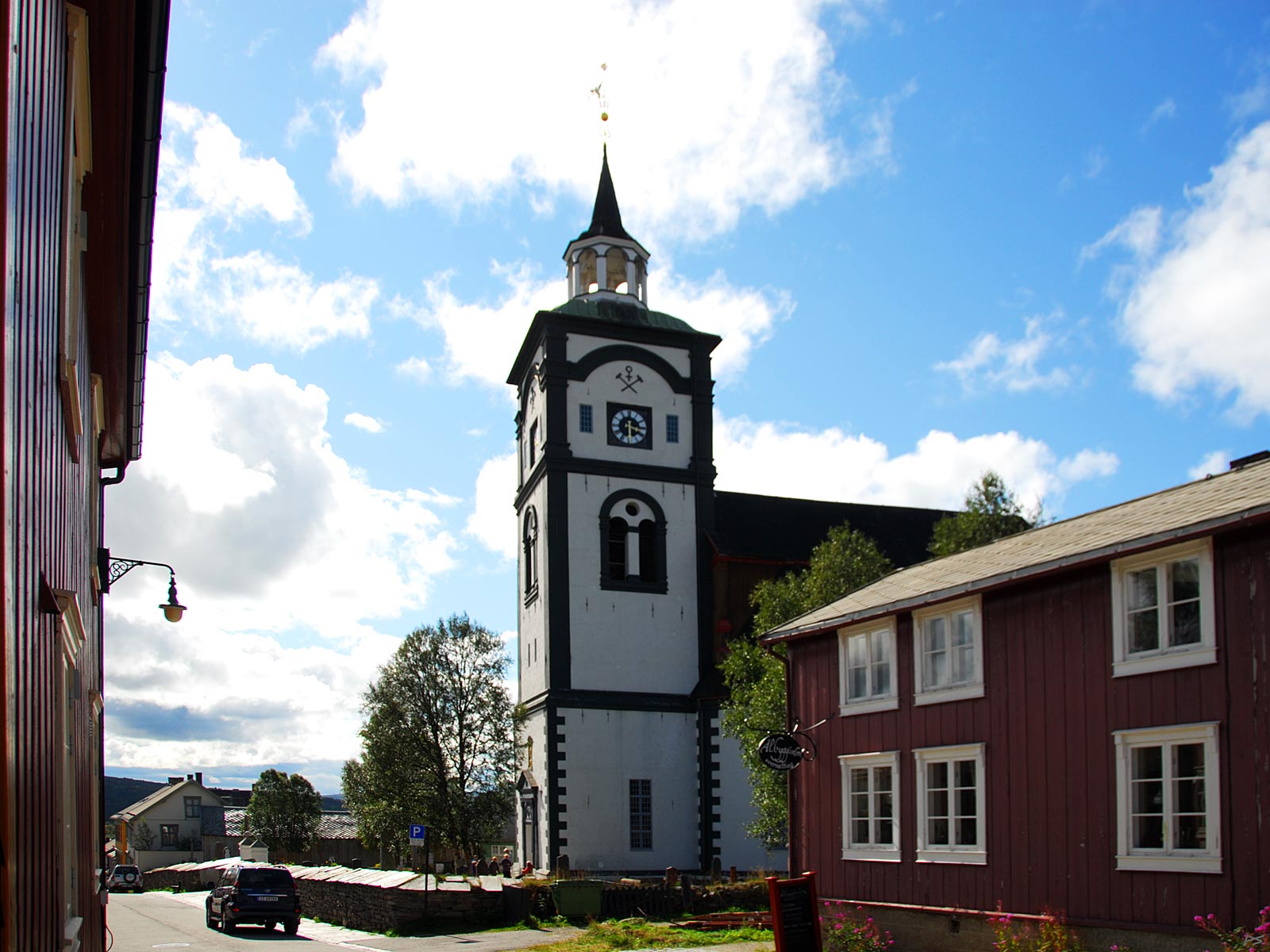
The church seen from the top of Kjerkgata. The main entrance is on the street side of the tower. This church have often been called Bergstadens Ziir – the Mining Town's Beauty. ("Ziir" was German but in Germany it is now spelled "Zier". The mining engineers were German and traces of their language still exist here.) The mining company's logo is shown on the tower wall (above the clock) and other places. This logo is now integrated in the town's coat of arms, see bottom of page. There are three bells in the tower, the biggest one weights 900 kilograms.
(2014-08-15)
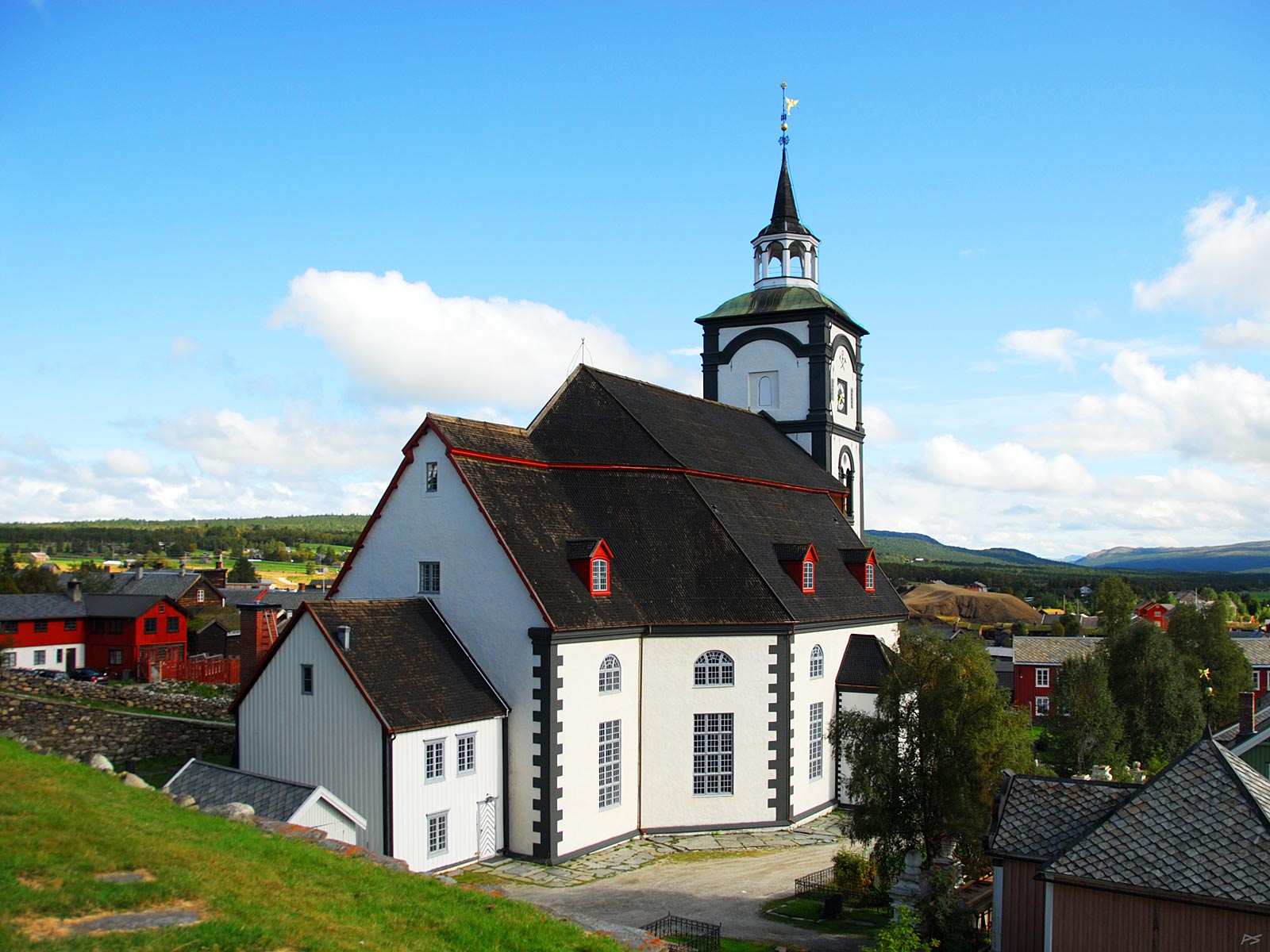
View from the west. This is a stone (limestone, slate and lime mortar) church with a wooden roof and a wooden interior. The roof is covered with 60 thousand shingles made from slow growing pine and impregnated with tar mixed with coal dust and sand. This has held out since the church was built, and after some shingles have been replaced, it may last for many years to come. Both the interior and the exterior were restored during September 2008 to December 2010 and the church is now a beauty indeed.
(2014-08-15)
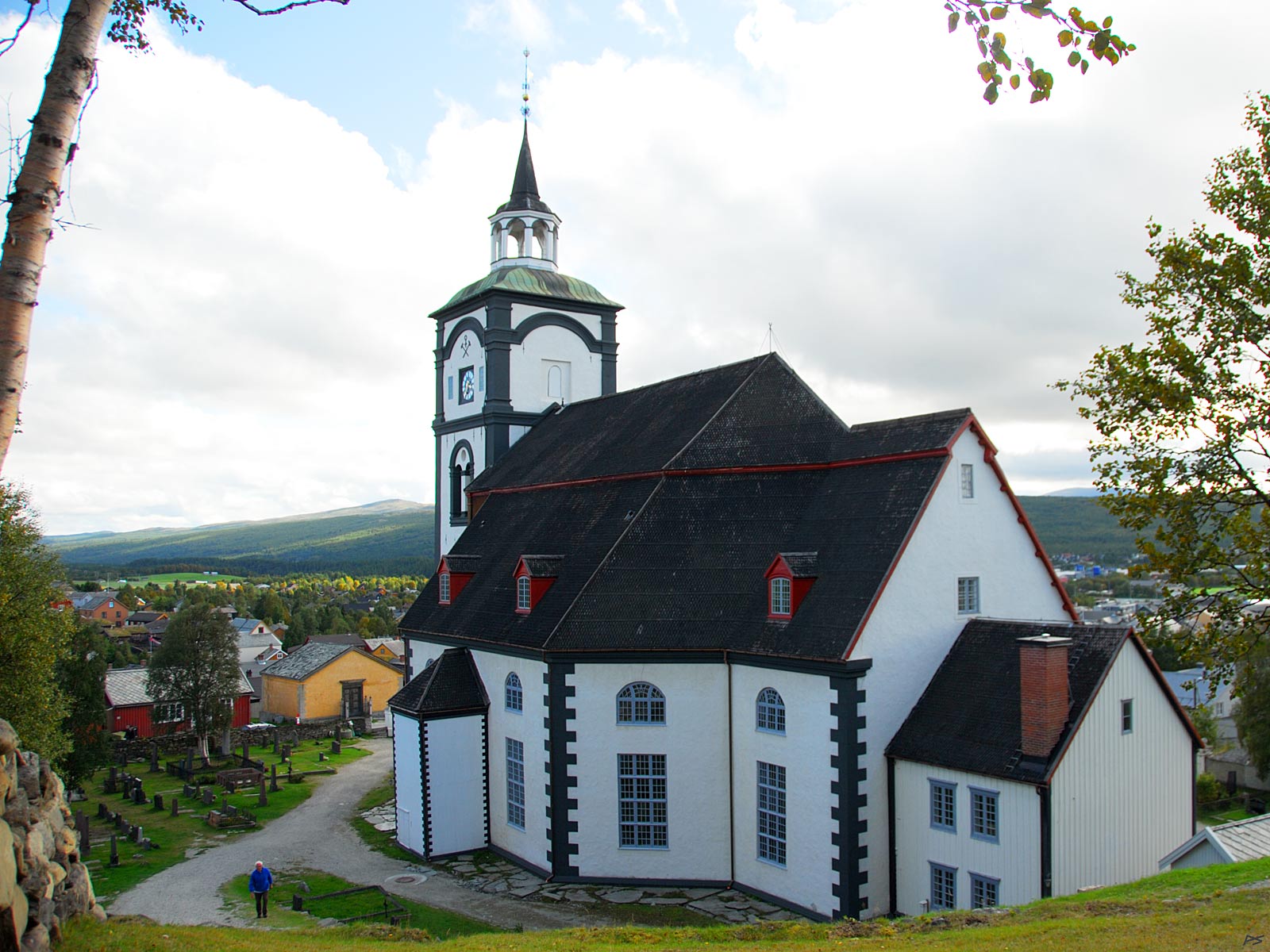
View from the north. On each long walls is an entrance with staircases to the galleries on that side, all wooden, but the outside is painted to match the stone walls. The altar is in the north northwest end of the church, whereas it traditionally should be towards the east where the sun rises.
(2014-08-15)
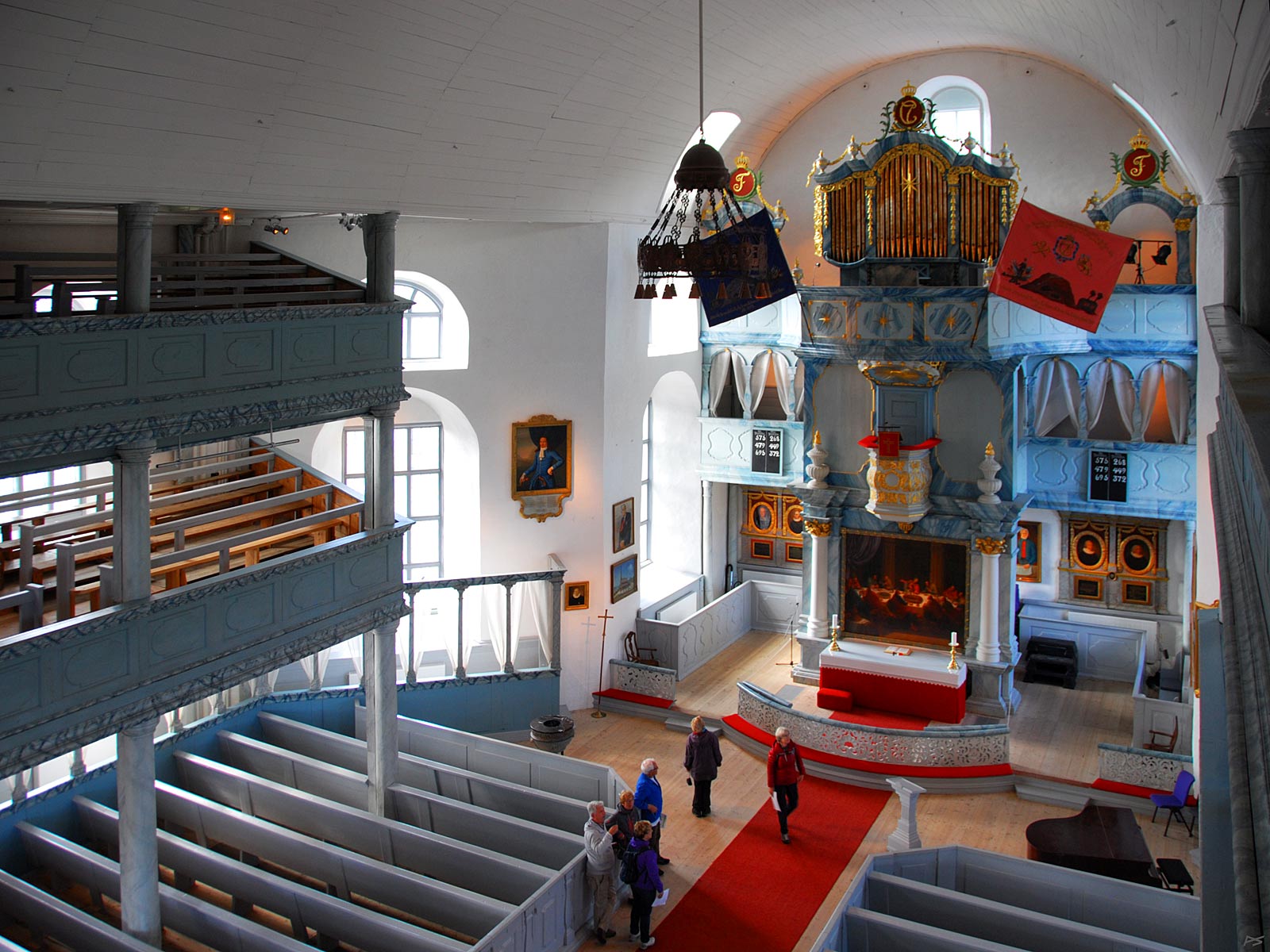
View towards the altar from the east side top gallery. The altarpiece is a painting of the Institution of the Lord's Supper by Johan Jørgen Lyng (1792). The pulpit is immediately above the painting, and on each side of the pulpit is a gallery originally intended for the priest's family. Above the pulpit stands a baroque organ, built 1740–42. It was restored in 1984–1996 and is used in some concerts. The old banners of the two local military units, once organized by the mining company, are exhibited left and right of the organ. On both sides of the nave are galleries on two levels, accessible from staircases on the outside of the church and originally intended for the poor. (The poorest ones, on the back of the upper level, could not see the priest on the pulpit.) On the main floor, along both side walls, chairs behind the curtains were auctioned once a year for use during the year to come. In the nave, benches on the left side were for women, on the right side for men, and people found their seats according to rank, highest rank nearest the altar.
(2014-08-15)
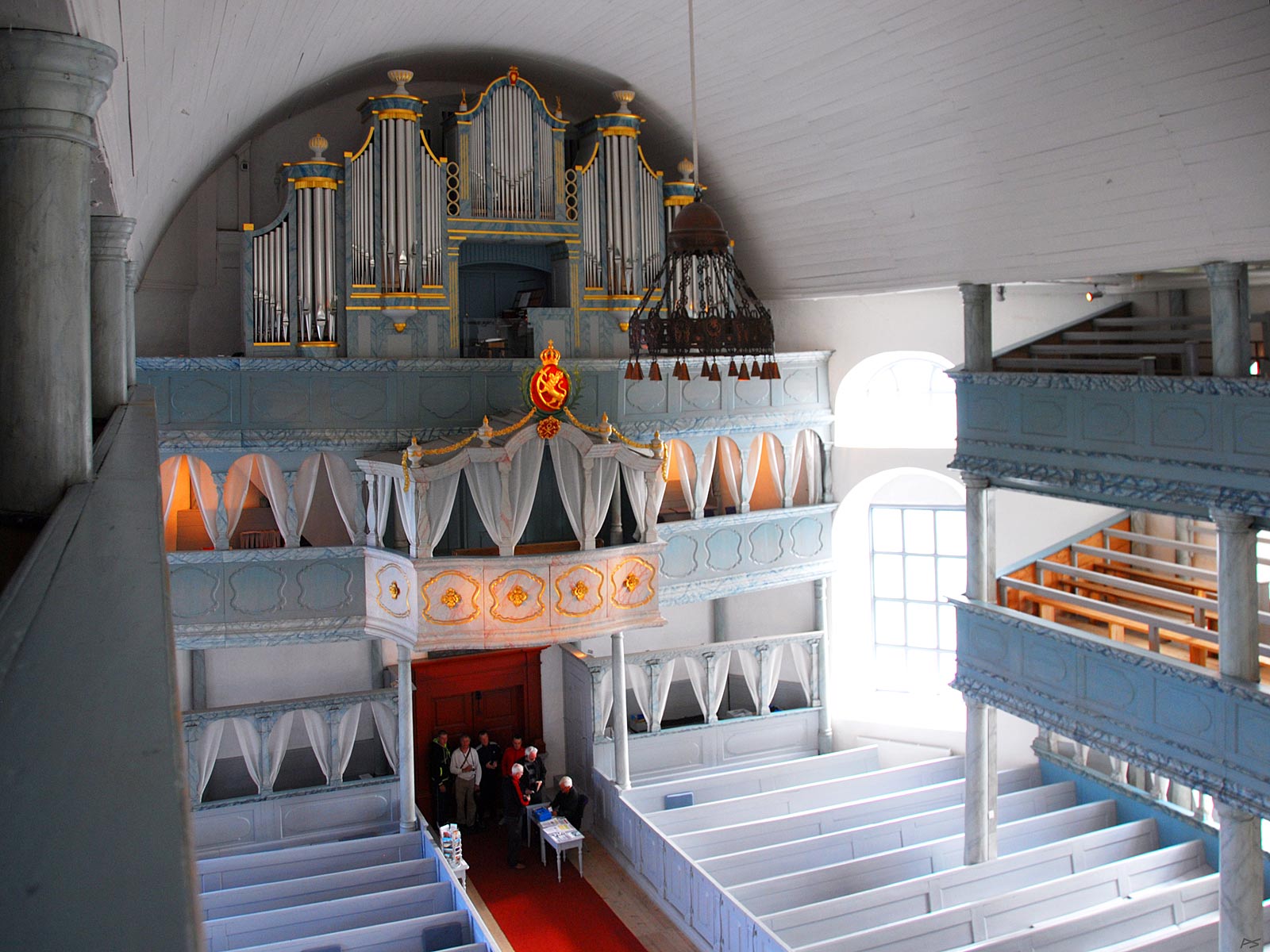
View towards the rear of the nave from the east side top gallery. On the second level is the royal box with the emblem of the Norwegian Lion (as depicted during the last part of the union with Denmark), and below that the mining company's logo. On both sides of the royal box the chairs were reserved for the mining company's management. Above the royal box stands a new organ, first used on Christmas Eve 2012. The acoustic properties of the church is excellent. The church has 1640 seats, but for fire safety the number of people is limited to 1000.
(2014-08-15)
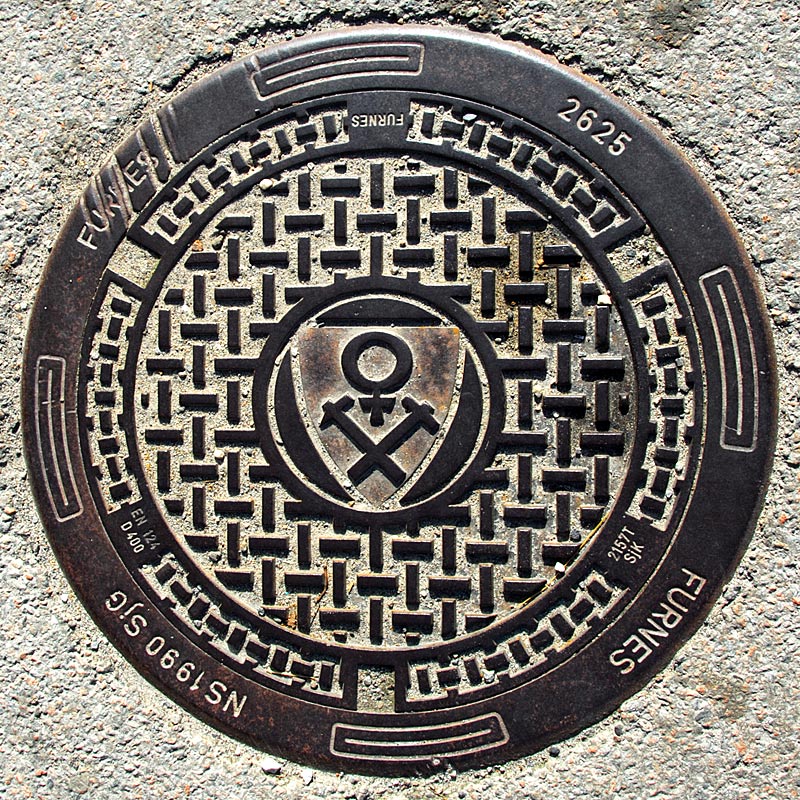
A manhole cover in a street of the Mining Town, depicting the Røros coat of arms. Like the logo of the former mining company, it shows two crossed old mining tool and above that the old symbol of the element copper (which also has other interpretations).
(2014-08-15)
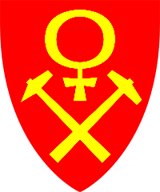
The Røros coat of arms
